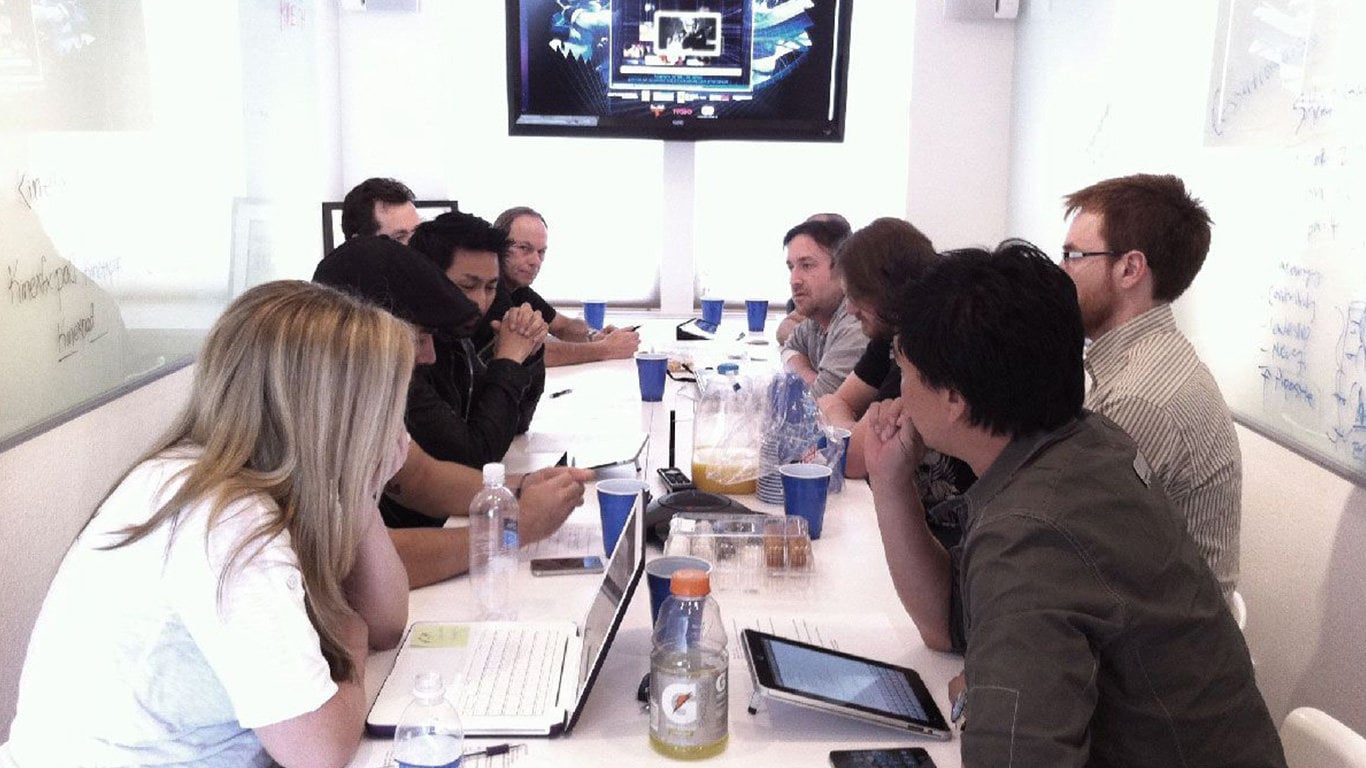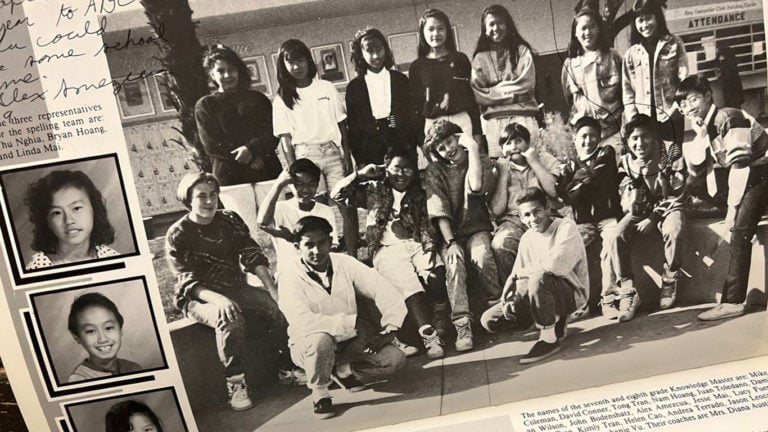Weekly Journal – Gifted: Part 2 – The Young Adult Years
Continuing from where we last left off with: Weekly Journal – Gifted: Part 1 – The Adolescent Years
During my high school summers, when I was 17, I worked at Computer City with those high school upperclassmen I mentioned before. Gus was an absolute computer geek. He worked in the Apple department and was crazy about Macintosh computers. Every time I went upstairs to see what he was doing, he’d show me all kinds of cool new things he could do on Photoshop, like making fonts look 3D or adding effects like metal or liquid. Most of what Gus showed me might have gone to waste since I couldn’t afford a Mac. However, that year also happened to be the first time that Photoshop was ported to Windows, so anytime before that, I might have lost interest, and anytime after, I might have been too late to be among the first users of Photoshop on Windows. Soon enough, I was designing flyers and posters for school clubs and even helping out at my parents’ printing shop customers with more professional designs.
After high school, I moved into a four-bedroom house in Garden Grove with five friends. The rent was dirt cheap at only $900 a month, but we later found out that the house was supposedly haunted. Spooky! But the price was too good to pass up. A few nights of sleep paralysis wasn’t going to kill us.
Since Computer City closed down, I started working full-time at CompUSA, where I met Huy, a young Vietnamese guy about 4 years older than me who was just about to finish his undergraduate degree, while simultaneously working part-time and still the top salesman at CompUSA. I wanted to be like him, so I started using his strategy of being upfront and honest with customers instead of pushing them to buy expensive products. His approach worked so well that I quickly became the top salesman and was promoted to corporate sales within a few months. I had been a top salesman before when I was 18 but back then it was all about selling the computers with the highest spiff, and attaching anything and everything as we made our way to the register. Do you need a printer? Sure you do. Floppy discs, blank CDs, jewel cases, zip drives, software, games, print cartridges, surge protectors, and the big splurge, extended warranties, and service plans? Yea, you need them all, after all, disaster will strike at any moment so be prepared. I just shoved it down their throats. For certain PCs, I could get $100 in spiff commissions, some printers $50, and some modems up to $20, and so on. On average focusing on spiffed items and just selling the hell out of it could earn you $200 in commission per system. Making $30k a year at 18 years old felt like hitting the jackpot!
At that time, many of my co-workers were in college, and most of them were studying network administration. I looked into it, and it seemed to be a growing field with better opportunities and pay. I had just started dating someone, my first live-in girlfriend, and thought I should begin thinking about how to support both of us in the long term so began studying management of information systems every night and eventually landed a job at Linksys, a networking company based in Irvine.
I started as a tech support agent, and while helping customers, I noticed that the user guides for networking devices throughout the entire industry were mostly text and difficult for novices to understand. So, I took it upon myself to create a new user guide with screenshots to make things easier for customers. No one asked me to do it, I just thought it would be something that could help me out personally when dealing with customers. Additionally, since I was always busy with support calls during the work day, I spent the hours after the office was closed working on it by myself in a screen-lit corner of the dark office. Back then it was usually just me, President Victor Tsao, and his wife Vice President Janie Tsao who would still be there grinding it out until 9 or even 10 PM. When it was finally complete, which was about two months after starting there, I presented it to my manager Tony Elahi and he passed it on up the chain until it reached the attention of Victor Tsao, who seemed to like the idea so he moved me to the marketing department to implement it for all their products.
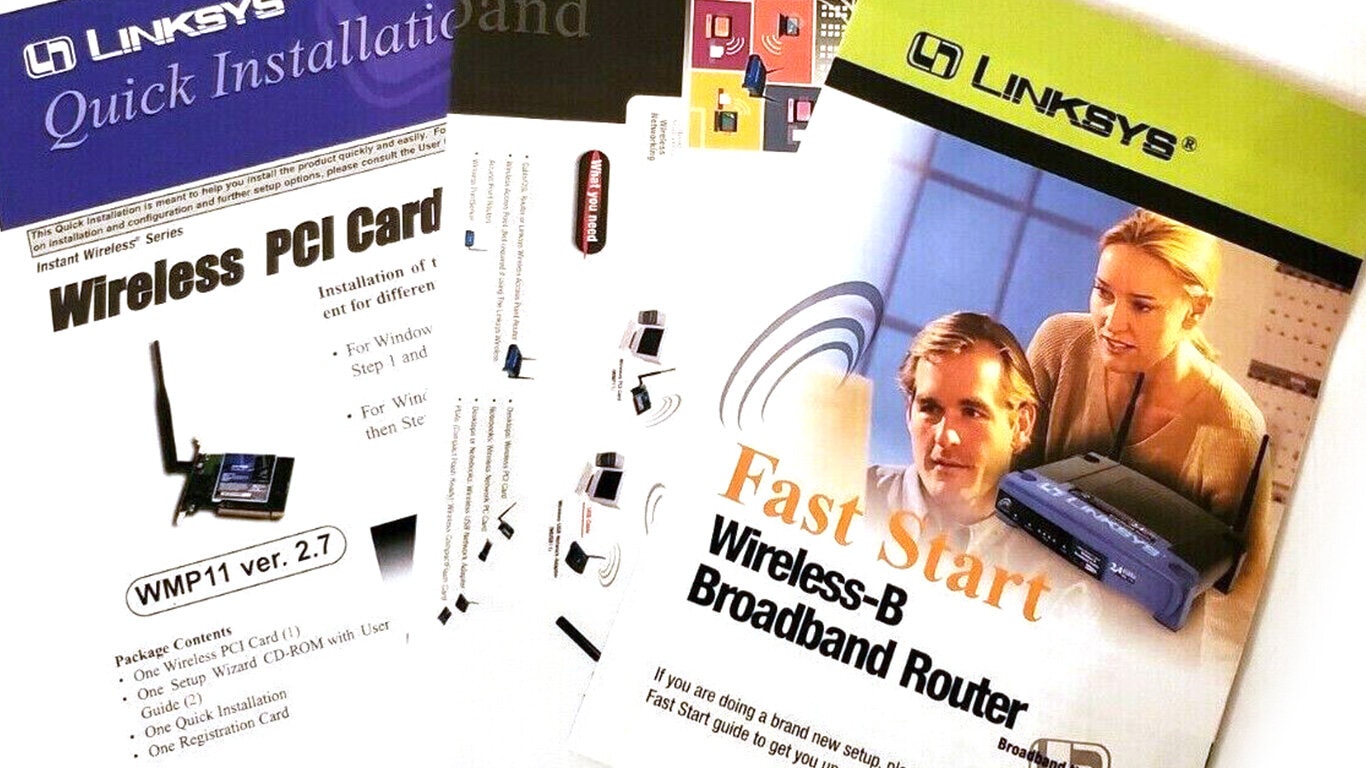
In marketing, I worked on the user guides but also started expanding out into website design and packaging on my own. As it turns out, I happen to actually know a lot about graphic design yet ironically at that moment, it wasn’t at the top of my interest only because I didn’t see myself as a natural artist. Sure I can do some graphic stuff here and there but I thought back to people like Viva’s and Terry Zdunich’s amazing drawings and paintings, and thought their level of natural artistic talent seems so far out of reach for someone like me, how wasn’t naturally gifted with artistic abilities, so I didn’t think it was a realistic goal. My copywriting was even worst so they brought in a young college guy named Michael Calore to become our copywriter and he and I became good friends. He was the first person I had talked to regularly in a long time that had an authentic academic presence and he taught me so much about how to think about copy and styles of writing. Many years later, Mike would eventually become the Editor and Chief at Wired Magazine.
I was eventually promoted to product manager. My first project was designing the BEFW11S4, Linksys’ first consumer-targeted wireless router. Most routers back then looked like flat metal boxes designed for server racks and the first commercial wireless router was much the same. I wanted it to be user-friendly and blend well in a home setting, so I made it small, stackable, and with two antennas. We even introduced it with a new two-tone blue color to give it a fresh friendly look while still having that trusted IBM blue kind of vibe.
Since the product had a whole new look unlike any of our previous products, I suggested we update our packaging to complement the new product ID. Up until then all Linksys packaging was hand drawn in chalk by an artist named Calvin Liu who was also the creator of the original Linksys logo. While he was just a contractor, and every time he visited the office I’d spend every minute I could watching him create these amazing designs from scratch. I didn’t want to be a dick and replace him, so I found ways to let him take the lead allowing us to work collaboratively with both of us working together simultaneously on the same design. We came up with a number of new ideas that hadn’t been done before such as creating a simple how-to setup in illustration on the back of the box as well as upselling other Linksys products. Many of these new features on the packaging are now commonplace on PC component packaging.
This particular product design and packaging would become the standard for Linksys from that moment on for the next 4 to 5 years. It’s funny how anytime I look back at my old designs, I can’t but think they look hideous and how I’d approach them completely differently today.
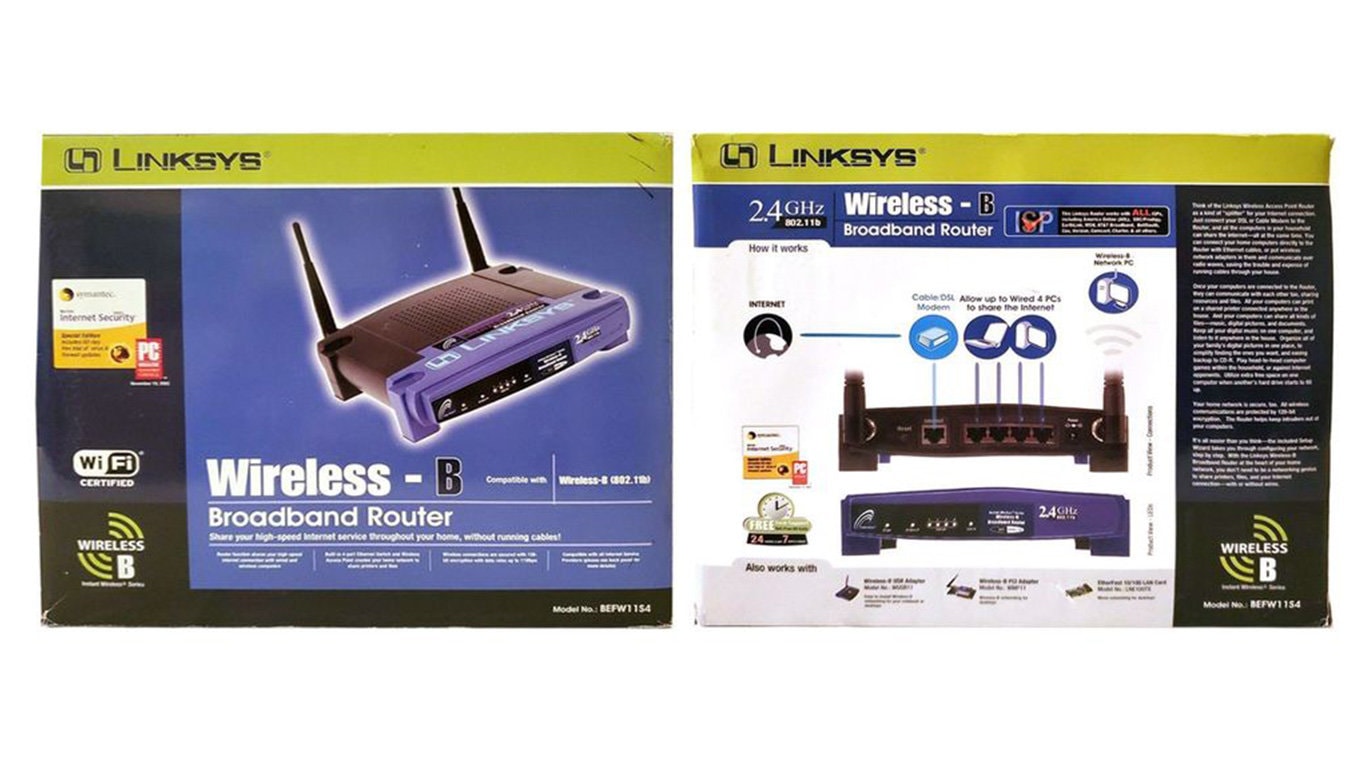
Working at Linksys allowed me to set up many LAN parties at my house, with network cables running throughout the house. I realized that gaming would rely heavily on networking, so I proposed bundling our network interface cards with popular games like Counter-Strike and Warcraft. Both deals would fall through since the game developers didn’t think it was as relevant to gamers as video cards were. I just wanted to have something on the box that attracted gamers to our bottom-shelf networking products, I didn’t really care about how networked gaming would become so prevalent in the future but I had no doubts at the time. For me, it was just about sharing my love for gaming with others. If more people played games, more people would make games. So instead we started crafting ads that had Counter-Strike and Warcraft graphics on them and luckily we were so small of a brand the developers really didn’t take much notice of us.
After my second year at Linksys, my first son was on the way, and I felt the need to explore other options for a more stable future for my family. I decided to focus on getting a degree, not knowing that Linksys would be acquired by Cisco just three years later, which could have led to new opportunities, promotions, and stock shares. Sometimes I wonder what would have happened if I had stayed at Linksys. Perhaps I would have been part of the Cisco acquisition and experienced new opportunities, promotions, and stock options. Maybe I would have worked on more innovative projects and taken on leadership roles within the organization.
Victor had hinted at it when I gave him my resignation with a weird sort of, “I don’t think it’s a good idea at this time, you might be missing out on something really big around the corner, I want you to be a part of this…” but at 20 years old I was still pretty much a dumb kid, to be honest. I just followed my gut feelings most of time. I was thinking ahead but not to that extent because things like mergers, acquisitions, stocks, I didn’t understand how all that worked yet. It’s impossible to say for sure what might have happened, but I’m happy with the decisions I made at the time. Pursuing a degree allowed me to develop new skills and set me on the path that lead me to where I am today.
I remember when I left my family behind and embarked on a journey to San Francisco to pursue a degree in 3D design at the Academy of Arts. I was excited to explore new opportunities in the gaming industry. While attending evening classes at the Academy, I also worked at CompUSA’s flagship store in San Francisco to send money back home. My goal was to bring my wife and son up to San Francisco in half a year or so.
It was during my days at work that I stumbled upon groundbreaking software that was about to change the face of the internet. That software was Macromedia Flash 3. Before Flash 3, its predecessor versions could only create simple animations within its proprietary player. But with the introduction of Flash 3, animations could finally be played on websites through a JavaScript plug-in. Being in San Francisco had its perks, as news of cutting-edge technology spread like wildfire. Especially when it was related to a local San Francisco company, mostly because people there loved to jump into the next hottest startups or companies with innovative products all the time. It was like being at meetups every day before the meetup app even existed.
I decided to teach myself Flash during lunch breaks and after work, and just a month into it, I was hooked. I saw more potential in Flash than in 3D rendering and modeling, so only after 5 months after arriving in San Francisco, I dropped out of school, moved back home, and focused on mastering this new software. I earned my MCE certification quickly and landed a job as an MIS Junior Administrator at a local law firm called Miles Wright, Finlay, and Zak. It was a low-pressure job that gave me plenty of time to study Flash, so I spent most of my days in the server room, reading and learning.
Career Tip: If you can get a job working in the MIS department of a non-technical company i.e. law, medical, accounting, etc. You can spend most of the day studying in the server room since, a majority of the time, major implementations only happen once a year usually.
However, not long after starting at the law firm, my wife and I divorced, and following a short custody battle, I won custody of my son. It was just the two of us, and once again, I felt the pressure to do more, learn more, and move up to a bigger company to secure a better future for my son. After a year of using Flash, I was confident I could find a full-time job in the field. I applied to a local design agency called Rare Medium and was hired as an associate designer. My primary responsibility was designing flash-based websites, sometimes fully animated sites, and other times just animated features within traditional sites. We had notable clients such as Price Waterhouse Coopers, Nordstrom, and Epson.
At Rare Medium, I met my fellow coworkers, Brandon Dove, Grant Hollis, and Aaron Boodman. We were all under 22 years old and were known as “The Kids.” We were the superstars, as very few people knew how to do flash design, which was the hottest thing on the internet at the time. However, for most of us, our skills were pretty rudimentary, limited mostly to simple animations and actions. Rare Medium often temporarily transferred employees from other offices to work on complex projects that required heavy action scripting, which was beyond our capabilities. One of these groups was a team of designers from New York, who mostly remained invisible to the rest of the company. They worked in a small office on a completely different floor.
I was intrigued, especially because one of them was a co-author of a book I had read called Masters of Flash. So, I took the initiative to introduce myself and later brought in the rest of my team to meet them. With their guidance, our understanding of action scripting expanded tremendously. Inspired by them, we began exploring experimental projects that no one else had ever attempted.
Our superstar was Aaron Boodman. Despite being a high school dropout like myself and dressing like a skater, he was an absolute genius. When Aaron became interested in something, he dove in deeper than most. He immersed himself in books and experimented outside the box.
Aaron and I discussed many of his cool ideas for creating things like radial navigation for web interfaces, which involved a clickable knob that users could turn. While it may not have seemed useful or practical to most people, Aaron was thinking far into the future. Late at night, long after everyone else had left, we stayed at the office, tinkering with our side projects, learning for the sake of learning, and proving that our ideas could be brought to life.
Aaron started reading geometry books and learning how to convert inputs into radians. I didn’t know much about programming either, but I helped where I could, although most of the heavy lifting was done by Aaron. His first success with radial navigation was the creation of a simple knob that, as you turned the dial, would gradually move through the entire spectrum of colors. He later improved on this with two knobs—one for color and the other for brightness. This sparked ideas for personalizing websites with specific colors just by turning two knobs. Aaron went on to create numerous other innovative concepts, such as fluid navigation, which allowed websites to resize and reorganize their panels at will, depending on the content being focused on. This idea probably inspired others in the future who would design the foundation for responsive web design.
Interestingly, Aaron eventually moved on to other jobs, and with encouragement from me and others, he landed a position at Google. There, he helped develop the entire concept of Google extensions, which at the time was called Gears for the Chrome browser. Aaron went on to become one of Google’s top programmers and was a well-recognized figure throughout the company.
On a personal note, after I introduced Aaron to Susan Lau, who was part of the New York team that visited us, they became close friends, eventually moving in together in Atlanta when Aaron was looking for new job opportunities. Years later, they’re married with kids—I like to think I played a significant role in bringing them together and supporting them through their ups and downs.
As for the rest of “The Kids,” Brandon went on to create his own web design agency and eventually became a leading evangelist for WordPress. Grant, on the other hand, ended up working for Insomniac Games, contributing to some of the hottest game titles of the time and many of the most recent award-winning games such as Spiderman for the PS4 which I helped him a tiny bit with. Our journeys have taken us in various directions, but we’ll always share a bond from our days as pioneers in the world of Flash design.
Looking back, it’s amazing to see how far we’ve come from those early days of experimenting with Flash. We were just a group of young, passionate individuals, trying to push the boundaries of what was possible on the internet. It’s incredible to see how our work and ideas have influenced the industry and paved the way for future innovations in web design.
After one year at Rare Medium, I found myself as the last designer to leave when the company collapsed due to the internet bubble bursting. I then started looking at local design and brand agencies to work for and landed at a small agency in Costa Mesa called Crisp Digital Brand Agency. At the time, Crisp was a fairly modest operation with only seven employees, and most of our clients were relatively small businesses. Some were logistics companies like One Service and others were small promotions companies like Insomniac who at the time was responsible for an event called Nocturnal Wonderland. We didn’t have a lot of money to spend on things like stock photography.
Sometimes, we weren’t even sure we were going to be paid for example the founder of Insomniac, Pasquale Rotella, often would call us saying he couldn’t pay us until after the event which was months away, and even then getting paid was like pulling teeth. This really constrained our budgets, so we couldn’t afford stock photography, which was quite expensive. Back then, I considered myself a fairly advanced user of Photoshop and Illustrator, but not a natural artist. To create something unique and exclusive for clients, I started tracing out stock images in Illustrator and layering them. Tracing was pretty easy, but I was uncomfortable with faces. Consequently, I designed intricate settings with people, but the people were all faceless.
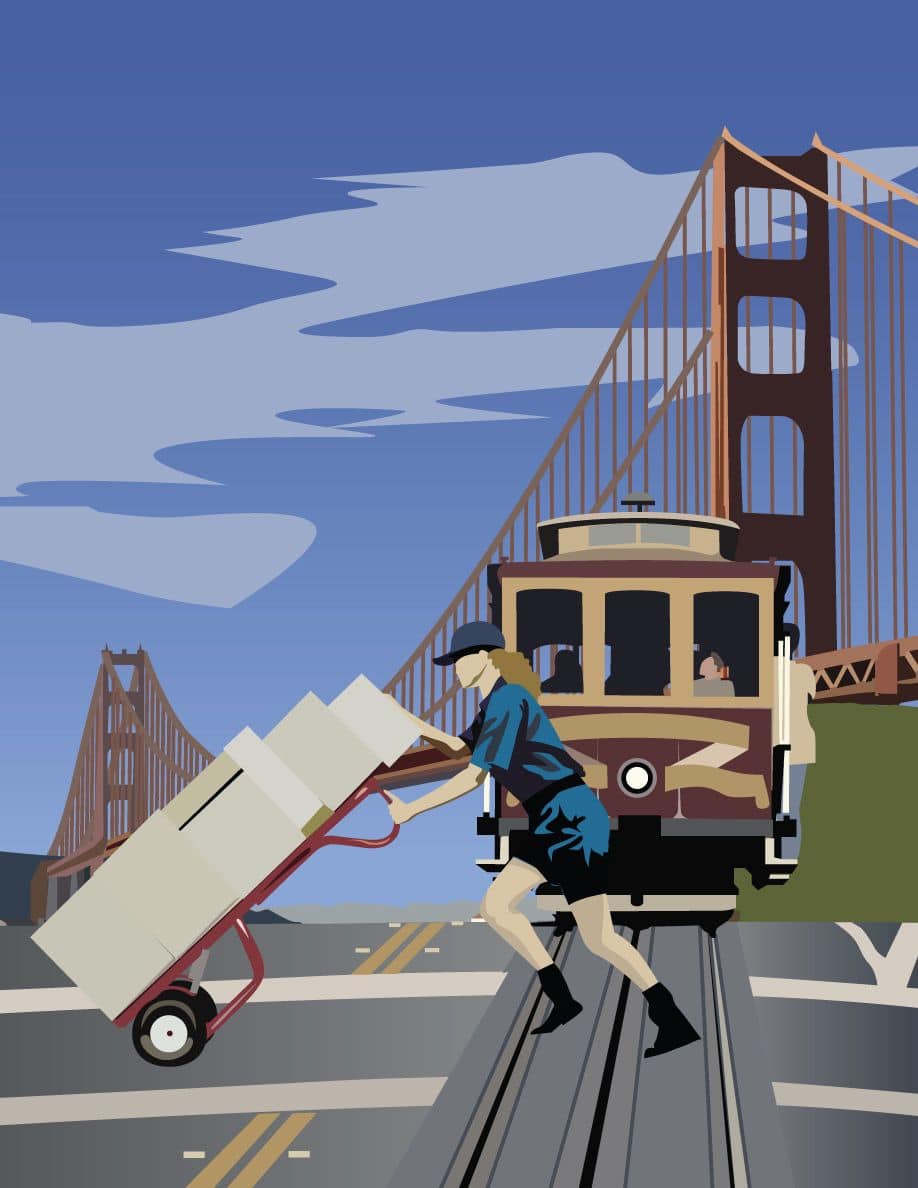
This newfound flexibility in drawing allowed us to craft images specific to our client’s needs, for example. If one service needed a picture of a delivery man delivering goods in San Francisco, we could do that if they wanted to be even more specific and have a man holding a package in Chicago at a Cubs game, we could do that too. As I practiced more, I became increasingly comfortable adding more in-depth details, such as simple, rudimentary faces where there were none before. This process wasn’t quick and in fact, took 1 year before I was somewhat comfortable with drawing faces. By the end of 3 years, I could recreate faces with good detail, even adding gradients to show depth and highlight unique facets of the face.

If it weren’t for our small company and the need to pinch pennies wherever possible, I probably wouldn’t have been presented with the challenge that allowed me to explore illustrative design, let alone reach this level of expertise. The company embraced innovation and provided me with the time I needed to explore my own professional growth.
Throughout this time, I hadn’t given much thought to going back to school. Working full-time and being a single father, I already had plenty on my plate and wasn’t eager to add even more to my already limited schedule.
Over the previous 6 years, I had never really given much thought to going back to school. Partly because I didn’t like school because I still felt dumber than most kids my age and because my short time at Art Academy seemed like both a waste of time and money. I felt most things could be self-taught just through books and YouTube. Working full-time and being a single father, I already had plenty on my plate, and I wasn’t eager to add even more to my already limited schedule. However, things changed when my girlfriend Juliee began attending community college. She often asked me to help with her homework and to support her, I started reading the same books assigned to her. In doing so, I began to regain my interest in learning, and I started attending community college myself. At first, I took the same classes as Juliee mostly just to help her out with her homework but had no personal interest in it myself, but eventually, education became my own personal motivation.
I started striving to be at the top of the class, talking to teachers after class to delve deeper into subjects. Along the way, I found certain classes particularly interesting, such as English literature and social sciences. The class that served as my tipping point was social psychology. The topics were fascinating, and the more I learned about sociology and psychology, the more I was hooked. That was the turning point at which I started making actual plans to get a degree in sociology.
After five years of juggling full-time work during the day at Crisp, spending time with my son in the afternoons, and taking weekend and night classes, I finally had all the credits I needed to transfer to a university. I was accepted to the University of Pennsylvania, Northwestern, and the University of California, Irvine. I was quite excited about the prospects of going to UPenn or Northwestern, thinking maybe this was fate bringing back the lost opportunity I had in the past with my scholarship to Milton Academy. However, that excitement was soon crushed when Juliee broke up with me because she didn’t think a long-distance relationship would work for her.
At this point, I had to reassess my plans. My mother had warned me about the Northeastern weather, and I didn’t want to take my son out of his familiar environment. So, after careful consideration, I decided to attend the University of California, Irvine. While it wasn’t my first choice, it was the best option for my situation. At least there, I could still do some consulting work while attending school full-time, and my parents could help care for my son allowing me to focus more on my education. So with that decision, I gave Crisp my 3-month resignation to give them adequate time to find a replacement, and finally, at the ripe age of 28, I started my undergraduate studies at UCI, as the oldest person in my class.
Looking back, I realize that most of my life’s progress was dependent on being in the right place, at the right time, and with the right people. Many of the events in my life were unexpected, while others seemed like unlikely possibilities.
If I hadn’t been hanging out with upperclassmen in high school and made the friends I did, I wouldn’t have gotten a job at Computer City when I was 17. If I hadn’t worked alongside Gus, I wouldn’t have learned so much about graphic design. If my parents didn’t have a printing business, I might not have had a chance to start designing things professionally at such an early age. If Huy at CompUSA hadn’t taught me everything he knew about computers and sales, I wouldn’t have been promoted to Corporate Sales. If I didn’t have a girlfriend, I wouldn’t have considered learning networking to get a job at Linksys. If the CEO of Linksys hadn’t taken this uneducated 19-year-old kid under his wing and allowed me to contribute and challenged me, I wouldn’t have had the chance to take part in so many industry-first innovations. If my girlfriend hadn’t become pregnant, I wouldn’t have been motivated to go to the Academy of Art to get a degree. If I hadn’t been in San Francisco just when Macromedia Flash was becoming the hottest thing, I wouldn’t have learned so much about it, let alone even known it existed. If I hadn’t learned Flash at precisely the right time, I wouldn’t have gotten a job at Rare Medium. If I hadn’t been at Rare Medium, I wouldn’t have met the NY team that taught me action scripting and introduced me to advanced programming. If I hadn’t learned advanced programming, Aaron and I wouldn’t have come up with so many cool ideas that eventually laid the foundation for features the entire world now uses daily on the internet. If the internet bubble hadn’t burst, I wouldn’t have ended up at Crisp, where I finally gained the confidence to try real artistic expression and achieve skills that previously seemed impossible. If my girlfriend hadn’t asked me for help with her schoolwork, I wouldn’t have started going to school to support her, and I wouldn’t have fallen in love with education for the first time. And if it weren’t for that change in my perceptions about school, I wouldn’t have finally made it to a university to begin earning a degree.
Looking back, I can see that I was never really “gifted” in the traditional sense. I didn’t excel in school, I didn’t care about formal education, and I didn’t have any innate artistic skills. However, I was gifted with many small, seemingly insignificant opportunities and circumstances that showed me new paths to take. I wouldn’t have taken those paths if it weren’t for the people around me pulling me along, lifting me up, and showing me the way.
My journey has been a winding road, filled with ups and downs, successes and failures. Through it all, I’ve learned to embrace the unexpected and make the most of the opportunities life presents. In the next and probably final chapter of this series, I’ll continue with my college experience and the events that led me to where I am now.

